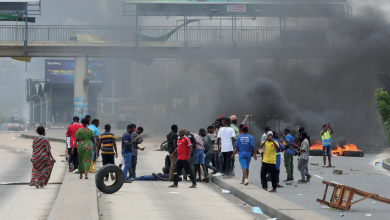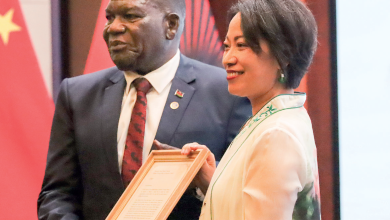Govt’s maize plan tumbles
Government’s plan to fill a 600 000-metric ton (MT) maize deficit through winter and irrigation farming is in disarray while its humanitarian appeal has only attracted a fifth of what is required to save at least four million starving Malawians.
Our analysis based on expert interviews and reports show that the Ministry of Agriculture’s three-pronged K270 billion plan for off-rainy season maize production is beset by funding woes and dry soils from the El Nino-induced drought.

Furthermore, rising water levels, especially in the Shire Valley from the flood gates of Lake Malawi, have submerged most of the wetlands that enable winter cropping, according to the International Food Policy Institute (Ifpri) and local experts, including from Lilongwe University of Agriculture and Natural Resources (Luanar).
Meanwhile, prices of maize have more than doubled over the past three months from K522 per kilogramme (kg) in May to about K1 000 per kg in July as supplies of the staple grain dwindle and famine relief is yet to pick steam.
That means even where the maize is available the price is too high for more than 70 percent of Malawians who live below the international poverty line of less than $2.15 (K3 600) per day.
However, Agricultural Development and Marketing Corporation (Admarc)—which plays a grain price stabilisation role in hard times like these—is yet to buy the required tonnage to improve supply and soften prices.
In a written response on Thursday, Admarc Limited s p o ke s p e r s o n T h e r e s a Chapulapula said the State grain trader had K38 billion to buy 40 600 MT of maize, but has only spent about K18 billion on 26000 MT.
The National Food Reserves Agency (NFRA)—which is responsible for stocking and managing the nation’s strategic grain reserves—is well below mobilisation targets.
Its chief executive officer George Macheka said last week that the agency has so far procured 25 000 MT of maize against its 60 000 MT target, but expressed optimism that it will exceed its 60 000MT goal.
Failed plan
In their May 29 2024 report for Ifpri Malawi—researchers Jan Duchoslav, Mazvita Chiduwa, Simon Denhere, Rodwell Mzonde, George Phiri and Joachim De Weerdt—had warned that the Ministry of Agriculture’s bet on winter cropping was unlikely to achieve objectives.
Capital Hill’s winter production approach—designed to cost around $150.5 million (almost K280 billion) and envisaged to yield 615 000 MT of maize—is built around smallholder farmers’ residual cultivation, utilisation of existing agriculture schemes as well as refurbishment and construction of irrigation facilities, according to Ifpri.
Under the first component of the strategy, government planned to buy $45.2 million worth of maize seed and chemical fertiliser for smallholder farmers with access to land in shallow wetlands (dambos) and on riverbanks to grow 210 000 MT of maize on 140 000 hectares of wetland.
But the Ifpri researchers said this strategy is dependent on the soil retaining enough residual moisture from the rainy season to enable maize cultivation.
Reads the report in part: “Even in a year when enough rain falls in the wet summer season, planting maize that relies on residual moisture cultivation needs to be done before June. This year the soils are already too dry across much of the country.”
The report added that with water levels in Lake Malawi at a historic high, much of the wetlands in the Shire Valley are too flooded for crop production.
A senior official from the Shire Valley Agricultural Development Division (ADD), speaking on condition of anonymity, confirmed last week that most of the wetlands that produce food in winter are too water-logged for cultivation.
The second strand involves utilisation of existing irrigation schemes, with authorities envisaging to supply $25.5 million in seeds and fertiliser to middle-scale farmers and institutions such as the Malawi Defence Force and Greenbelt Authority Mega Farms to grow 218 000 MT of maize on 48 400 hectares (ha) of existing irrigation schemes.
Under this arrangement, the ministry also wanted to contract big commercial farms to use 25 000ha of their irrigated land to grow 100 000 MT of maize for NFRA to purchase at a cost of $48.5 million.
But Ifpri researchers said this will not work because the irrigation equipment at the targeted commercial farms is already used to grow cash crops.
Moreover, Greenbelt Authority chief executive officer Eric Chidzungu last Wednesday told Parliamentary Committee on Agriculture that a funding crisis has crippled its ability to contribute to the nation’s food security.
He said out of K18 billion proposed budget, they have only received K1.7 billion noting that one mega farm needs about K6 billion.
The third component includes refurbishment of irrigation schemes in which government planned to repair almost 5 800ha and irrigate 12 300ha at $31.3 million to produce 87 000 MT of maize.
Asked if the strategies can work to the current hunger situation, agriculture analysts Amos Ngwira and Horace Phiri observed that the strategies alone cannot help.
Ngwira observed that some parts of the country did not experience enough rains and it will be a challenge to rely on wetlands.
On his part, Phiri, who is a Luanar agriculture economist, said the strategies need to be complemented by maize and maize flour importation to boost food supply in the country.





